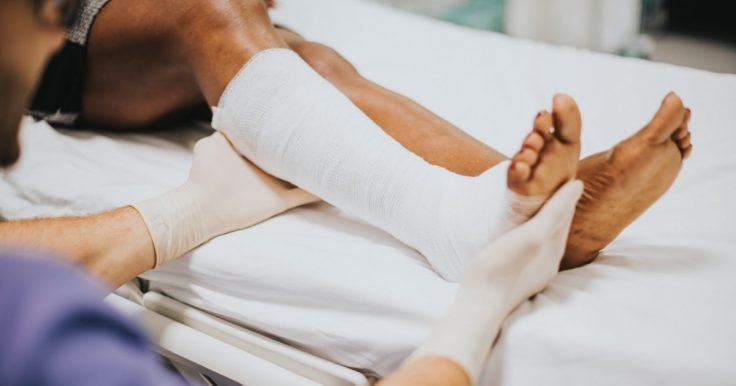6 Tips To Quickly Recover From A Sports Injury

If you’re an active person and got a sports injury, then you might want to follow these recovery tips to get back on track faster and safer.
Sports are a favorite pastime for many all around the world. It consumes people’s lives throughout the year, whether they are playing, watching, or coaching.
Unfortunately, if you play sports, or have friends and family who do, you know very well that getting injured is very common and almost expected at some point. After all, there is a whole type of medicine specifically dedicated to sports injuries.
Sometimes these injuries can be major and other times they can be minor; however, it is important to take any type seriously.
After experiencing a sports injury, there are several important steps to follow to make sure you recover in the shortest amount of time possible.
Recovery Tips After A Sports Injury
You can use these recovery tips after you suffered a sports injury to get back to your active lifestyle faster:
1. See A Doctor
The idea of seeing the doctor for many people is not fun, but after being injured it’s essential.
People’s bodies are quite vulnerable after being hurt, and oftentimes many people cannot self-diagnose with one hundred percent accuracy.
If someone gets their foot cleated in a soccer game and shows no major signs of pain in the coming days, they may be tempted to overlook the injury. They may view a doctor’s visit as a great hassle or a waste of money, but one of the bones in their feet could have been sprained, or a muscle could be torn. Not immediately finding out what is truly wrong could cost that person more pain and money in the future.
A doctor can reassure you of what next steps you should take. Taking the time to see them will give you peace of mind and prevent possible future health complications.
2. Follow The Doctor’s Advice
Going to the doctor is one thing, but actually doing what they advise you to do is another. If they say to get an x-ray done or to go see a physiotherapist, it is in your best interest to do so.
Testing can help reveal if there is any structural damage to treat. Without it, problems not visible to the human eye can go undetected.
Physical therapy can be an important tool in your path to recovery.
After getting hurt, it is understandable that you will avoid using your injured body part. That is the right thing to do since further aggravation could cause further damage.
However, the muscles around the affected grievance should not completely become inactive.
A physiotherapist can evaluate your body and come up with recovery exercises to best help you get better.
Strengthening the surrounding muscles can take off added strain on your injury.
Simple exercises to increase the range of motion of your injured body part can make sure you are able to function regularly soon and get back to playing the sport you love.
3. Rest Enough
While going through the process of getting a diagnosis, it is very important that you get plenty of rest.
If you have a physical job, let your employer know about your injury. With a doctor’s note, they can probably help you avoid doing anything that can cause you further pain.
If you are still in school, also be sure to inform any gym teachers.
Although you may have an important game coming up, it is a good idea to sit out until your body is ready to play again.
While at home, be sure to be off your damaged area as much as possible. Try to get family or friends to help you out around the house if needed.
4. Elevate The Injured Member
While taking it easy, you should also try to elevate your injured body part as much as possible.
The Earth’s gravitational force is constantly pushing down on us, so elevating your leg, for example, will help to keep any swelling down.
5. Compression And Icing
Wrapping an injury is important to also help with swelling. So make sure you use your doctor’s advice and use a compression bandage if he/she recommends it.
Icing the area can help with the same thing and reduce some of the pain you are experiencing. You can use a pack with ice cubes for this treatment.
Also, you can use an elastic bandage wrap and a few cubes of ice to create a cold compression that instantly relieves some of the pain and swelling.
6. Have Patience
Getting a sports injury can be scary, but the body is often capable of healing in some way, shape, or form. So it’s important to have patience.
You won’t heal overnight, no matter what treatment you’re using. Some sports injuries need days, other weeks, or even months to fully recover, so give your body enough time to heal.
Make sure you follow some of the recovery tips above, so you can get back on the court, field, rink, or wherever your passion lives.
Your post is really impressive and it has lots of knowledge in learning about physiotherapists. keep sharing your valuable knowledge with us.